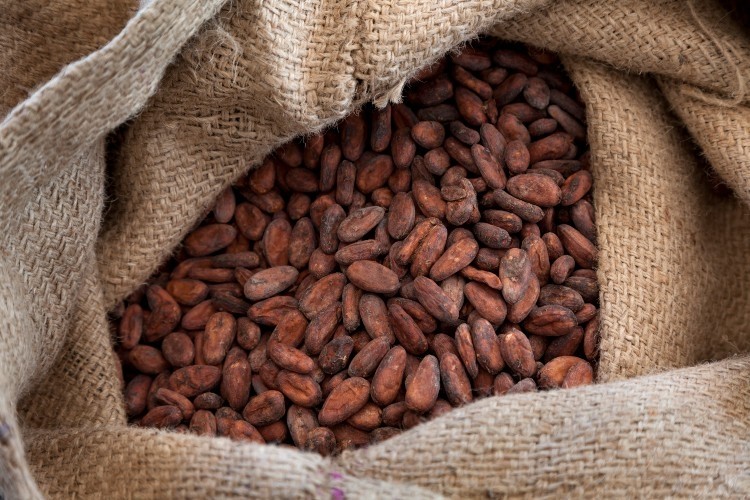Guest post
Preventing damages to cocoa beans in transit through increased supply chain transparency

Cocoa beans, also known as ‘Food of the Gods’, are a globally consumed commodity, grown in areas north and south of the equatorial belt – with Cote d’Ivoire, Ghana, Nigeria, and Cameroon—producing approximately 70% of the world’s cocoa supply.
Once harvested, the beans then travel mostly through sea transport to their main importing destinations located in North America and Europe. Raw cocoa belongs in the ‘most sensitive’ category of cargo - susceptible to unfavourable external factors.
It is a hygroscopic product that easily absorbs moisture and water vapor from the air. The sensitivity to external factors necessitates the strict observance of all conditions during the transportation of cocoa to ensure quality, fewer rejections upon arrival, and reduce waste in cocoa supply chains.
What causes damage to the cocoa beans during the voyage from farms to manufacturing facilities?
Cocoa beans are a relatively sensitive product, external factors, such as extreme changes in temperature, humidity, excessive moisture, and the environment they are stored in impact its quality throughout its journey.
The peak season of the cocoa harvest starts in November and ends in May. This means, for example, that the containers must be loaded in Abidjan (Cote d’Ivoire) when it is 35 degrees-Celsius and unloaded in Amsterdam when it is minus five degrees-Celsius.

Although being checked and approved at the port of loading, cocoa beans travel a long distance to reach their final port of unloading, often taking up to 20 days or more. Cocoa is a natural product and known for its strong hygroscopicity (ability to absorb moisture from air). The huge and sudden temperature fluctuations - air temperatures below zero Celsius, as well as significant daily temperature fluctuations, can damage cocoa beans as well as shredded cacao and make it unusable as raw ingredients for food.
Container rain and container sweat
During sea transportation, along with varying temperature levels the core factors like container rain and container sweat become a source of problems which lead to damage and/or loss of precious cargo. Intermodal shipments of cocoa beans can be subject to ‘container rain’. A combination of day-to-night temperature fluctuations, en-route delays, high water content in the beans, or containers with wooden floors all combine to trap ambient moisture inside the shipping container. This leads to condensation, causing a raining effect which leads to damaged cocoa beans.
Today, many organisations are increasingly involved in enhancing sustainable methods of farming practices to combat cocoa bean losses, sustainable sourcing, logistics and asset management and child labour issues. However, there is also a need to focus on identifying the risk incurred in cocoa quality loss during transportation and take necessary steps to avoid waste.
Steps companies can take to prevent damages to cocoa beans in transit:
● Check the cocoa beans are fully dried before loading
● The water content of the beans should not be higher than 8%
● Inspect the empty containers to make sure that they are dry, free of insects, odourless and structurally sound
● Beans should be stored in a dry, cool, and ventilated storage place
● Good stowage conditions i.e below deck and not close to any heat source
● Containers should be lined with double corrugated cardboard.
● Use of desiccant blankets wherever necessary
● Check favourable shipping routes based on historical data
● Monitor environmental conditions during transit to collect data helping you to identify hot spots of damages
Embracing IoT based real time monitoring technology to achieve a fully transparent cocoa supply chain
By incorporating real-time tracking and monitoring solutions enabled by IoT technology like one from Arviem, supply chain stakeholders can control each stage of their shipment and reduce the chance of spoilage or damage.
They can reroute the journey or adjust transit conditions as needed. In food and beverage supply chains and more specifically cocoa, IoT-enabled sensors can help monitor in real-time if a temperature excursion or humidity spike occurs. IoT enabled sensors embedded in the devices along with data analytics and performance reporting helps shippers to know:
● Routes on which the cargo suffered moisture stress
● Level of moisture cargo exposed on every transit leg
● Door opening alerts that cause a change in moisture levels
● Waiting time at ports, warehouses or customs
● Overview of temperature variation on the entire route
The constant exchange of information has the power to improve operations between suppliers and buyers by providing detailed information about eventualities that may occur as goods move through the supply chain. Moreover, an effective supply chain visibility solution together with a well-developed traceability strategy significantly reduces supply chain risk. It enables the company to either take action to prevent disasters or to respond to disruption by activating backup plans.




